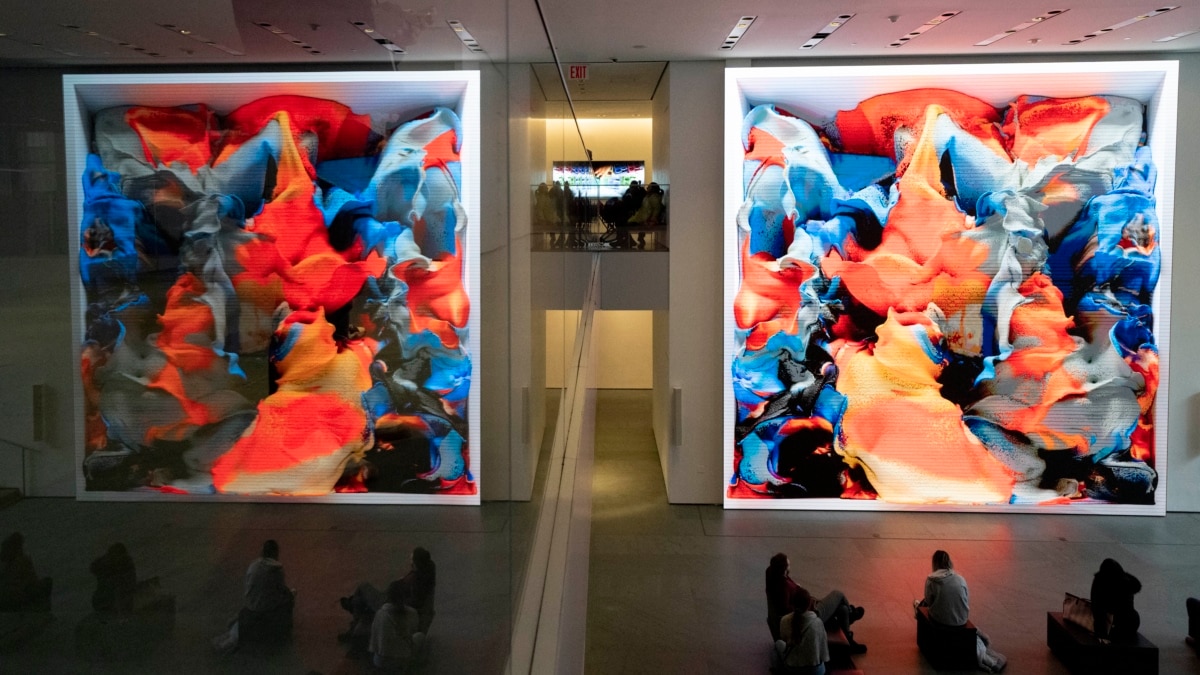The use of copyrighted works to train generative AI models, such as Meta's LLaMA, is raising concerns about copyright infringement and transparency, with potential legal consequences and a looming "day of reckoning" for the datasets used.
A federal judge ruled that AI-generated art is not eligible for copyright protection in the US due to the absence of human authorship.
Generative AI is starting to impact the animation and visual effects industry, with companies like Base Media exploring its potentials, but concerns about job security and copyright infringement remain.
Three artists, including concept artist Karla Ortiz, are suing AI art generators Stability AI, Midjourney, and DeviantArt for using their work to train generative AI systems without their consent, in a case that could test the boundaries of copyright law and impact the way AI systems are built. The artists argue that feeding copyrighted works into AI systems constitutes intellectual property theft, while AI companies claim fair use protection. The outcome could determine the legality of training large language models on copyrighted material.
A federal judge rejected an inventor's attempt to copyright an artwork generated by artificial intelligence, sparking a broader legal discussion on authorship and intellectual property rights.
A Washington D.C. judge has ruled that AI-generated art should not be awarded copyright protections since no humans played a central role in its creation, establishing a precedent that art should require human authorship; YouTube has partnered with Universal Music Group to launch an AI music incubator to protect artists from unauthorized use of their content; Meta has introduced an automated translator that works for multiple languages, but concerns have been raised regarding the impact it may have on individuals who wish to learn multiple languages; major studios are hiring "AI specialists" amidst a writers' strike, potentially leading to a future of automated entertainment that may not meet audience expectations.
Pokémon Go publisher Niantic is suspected of using AI-generated artwork in their promotional material for the upcoming season, sparking disappointment among fans who prefer the work of real artists.
Artificial intelligence (AI) image generation tools, such as Midjourney and DALL·E 2, have gained popularity for their ability to create photorealistic images, artwork, and sketches with just a few text prompts. Other image generators like DreamStudio, Dream by WOMBO, and Canva offer unique features and styles for generating a wide range of images. However, copyright issues surrounding AI-generated images have led to ongoing lawsuits.
Adobe has joined other companies in committing to safe AI development and has proposed a federal anti-impersonation law that would allow creators to seek damages from individuals using AI to impersonate them or their style for commercial purposes, which would make the impersonator, not the tool's vendor, the target of legal action.
The rise of easily accessible artificial intelligence is leading to an influx of AI-generated goods, including self-help books, wall art, and coloring books, which can be difficult to distinguish from authentic, human-created products, leading to scam products and potential harm to real artists.
The Authors Guild, representing prominent fiction authors, has filed a lawsuit against OpenAI, alleging copyright infringement and the unauthorized use of their works to train AI models like ChatGPT, which generates summaries and analyses of their novels, interfering with their economic prospects. This case could determine the legality of using copyrighted material to train AI systems.
Getty Images is reaffirming its stance against AI-generated content by banning submissions created with Adobe's Firefly-powered generative AI tools, a move that contrasts with competitor Shutterstock's allowance of AI-generated content.
The US Copyright Office has ruled for the third time that AI-generated art cannot be copyrighted, raising questions about whether AI-generated art is categorically excluded from copyright protection or if human creators should be listed as the image's creator. The office's position, which is based on existing copyright doctrine, has been criticized for being unscalable and a potential quagmire, as it fails to consider the creative choices made by AI systems similar to those made by human photographers.
